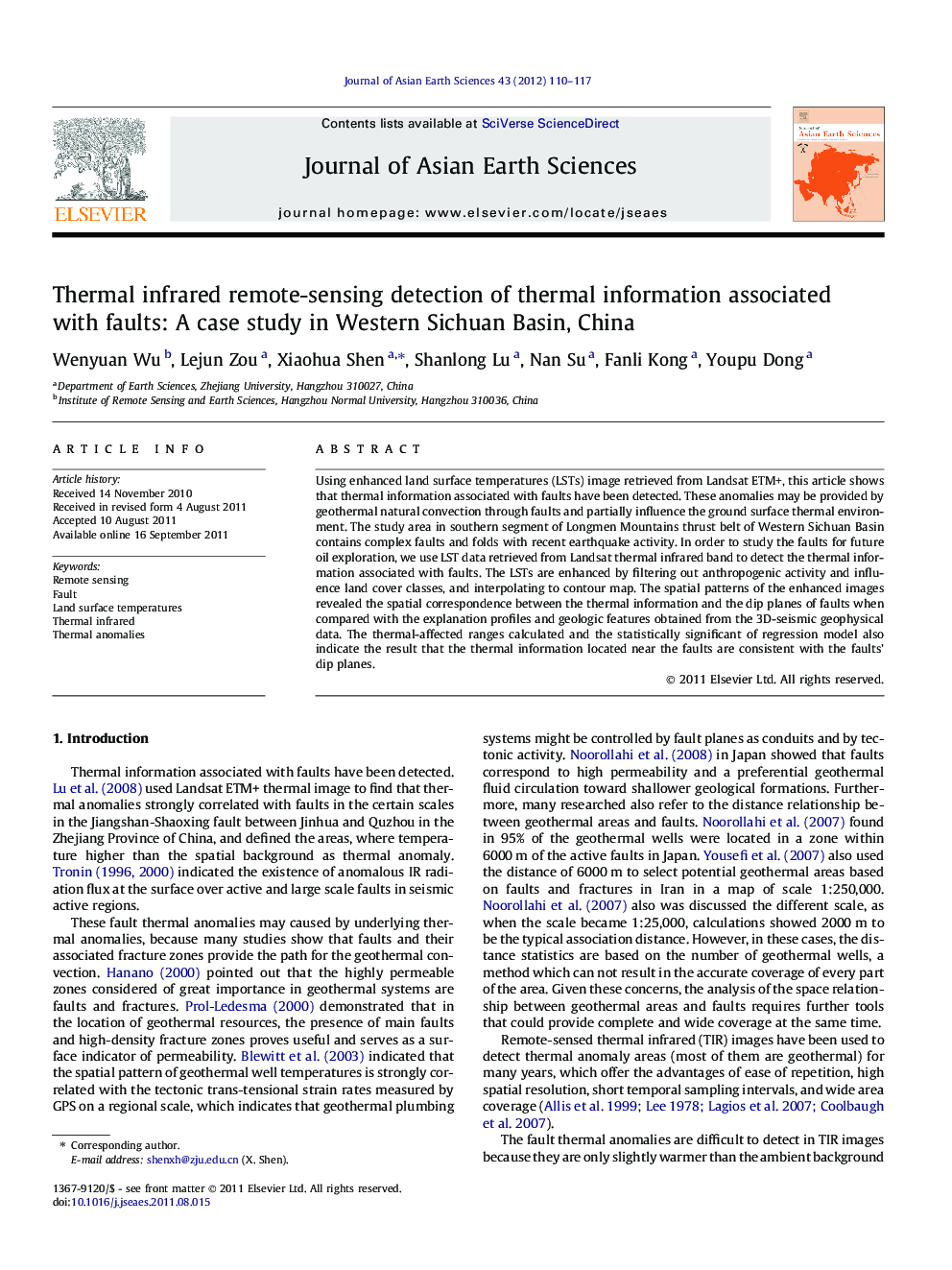| Article ID | Journal | Published Year | Pages | File Type |
|---|---|---|---|---|
| 4731626 | Journal of Asian Earth Sciences | 2012 | 8 Pages |
Using enhanced land surface temperatures (LSTs) image retrieved from Landsat ETM+, this article shows that thermal information associated with faults have been detected. These anomalies may be provided by geothermal natural convection through faults and partially influence the ground surface thermal environment. The study area in southern segment of Longmen Mountains thrust belt of Western Sichuan Basin contains complex faults and folds with recent earthquake activity. In order to study the faults for future oil exploration, we use LST data retrieved from Landsat thermal infrared band to detect the thermal information associated with faults. The LSTs are enhanced by filtering out anthropogenic activity and influence land cover classes, and interpolating to contour map. The spatial patterns of the enhanced images revealed the spatial correspondence between the thermal information and the dip planes of faults when compared with the explanation profiles and geologic features obtained from the 3D-seismic geophysical data. The thermal-affected ranges calculated and the statistically significant of regression model also indicate the result that the thermal information located near the faults are consistent with the faults’ dip planes.
► Thermal information associated with faults can be detected from enhanced thermal image. ► The thermal information consistent with the locations of faults’ dip planes. ► Seismic geophysical data prove the spatial correspondence. ► The statistically significant of regression model support the research.
